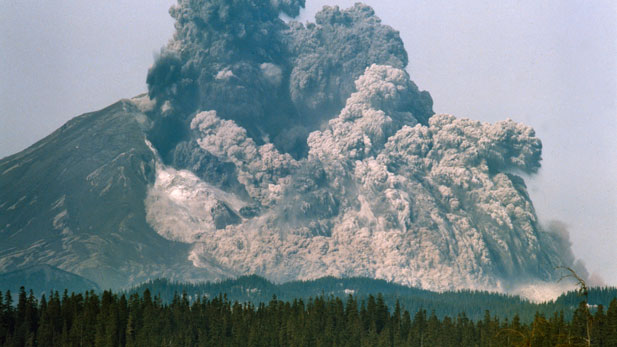When Mount St. Helens erupted in 1980, every living thing in the blast zone was buried beneath 300 feet of avalanche debris, covered with steaming mud and, finally, topped with a superheated layer of frothy rock from deep within the earth. It seemed as though Mount St. Helens might remain a wasteland forever. Then, to everyone's surprise, life began to bloom again. Over the course of 30 years, biologist Charlie Crisafulli has been documenting the dramatic return of plant and animal life to the barren landscape. But he has also tracked a new threat: The mountain, like the wildlife, is coming back to life.
 Mt. St. Helens eruption
Mt. St. Helens eruptionSoon after the 1980 eruption, new lava was bubbling up to the surface, and in 2004, a flurry of explosions blasted steam and ash thousands of feet into the air over Mount St. Helens. What force is driving this baffling pattern? Using GPS, magnetic mapping and more, geologists are tracking the movement of magma deep within the volcano and revealing a hidden lattice of faults that lies beneath the volatile landscape. NOVA presents a pioneering look at the interplay between biology and geology that may help scientists predict future volcanic eruptions.
Wednesday at 9 p.m. on PBS-HD.

By submitting your comments, you hereby give AZPM the right to post your comments and potentially use them in any other form of media operated by this institution.